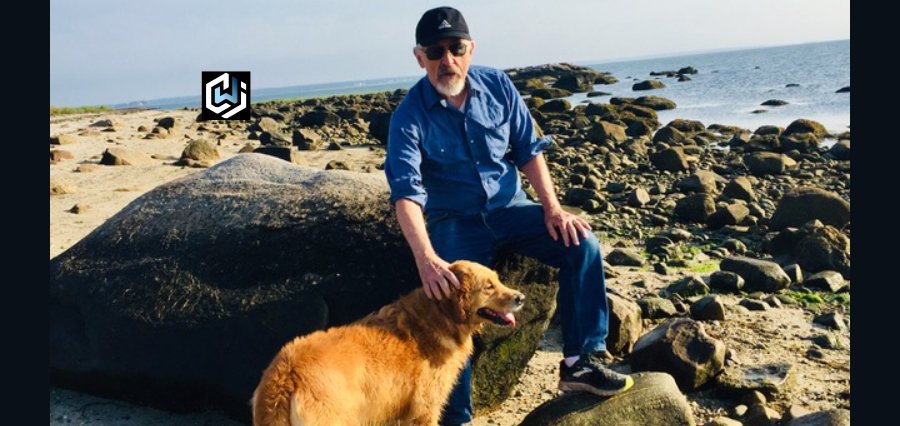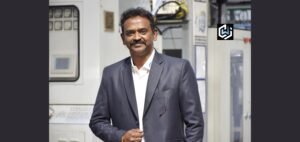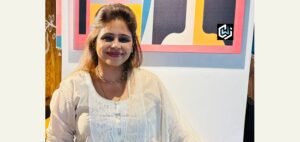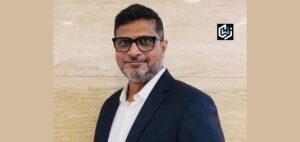In a world saturated with information, the ability to simply know is no longer sufficient. The true test lies in how knowledge is applied—how theories are transformed into actionable insights and real-world improvements. Few have bridged this gap as effectively as Prof. Dr. Richard Larson, whose life’s work stands as a testament to the power of applied intelligence. With a career that spans urban infrastructure, emergency systems, public policy, and education reform, Larson has not only advanced academic understanding but also revolutionized public systems that affect millions.
Prof. Dr. Richard Larson has never been content with operating solely within the theoretical realm. For him, education and research are not confined to classrooms or academic journals. They are tools for solving pressing societal problems—from improving 911 response times in New York City to guiding national pandemic strategies and reimagining education through digital innovation. His approach to learning, grounded in curiosity and compassion, has created a ripple effect of transformation in cities, systems, and minds across the globe.
Prof. Dr. Larson’s career is proof that impactful research requires more than intellectual rigor—it demands humility, fieldwork, collaboration, and a relentless focus on solving problems that matter. Through his advocacy for model-based thinking, dedication to interdisciplinary research, and commitment to mentorship, he has shown how an academic life can truly serve the public good. In his own words and actions, Prof. Dr. Richard Larson reshapes what it means to be a researcher, educator, and problem-solver in the 21st century.
Learning as Application, Not Accumulation
Prof. Dr. Richard Larson has long critiqued modern education for its overemphasis on theoretical knowledge and underemphasis on practical application. He observes that students often leave institutions armed with facts but lacking the tools to implement them meaningfully. For Prof. Dr. Larson, learning isn’t about hoarding information—it’s about transforming that knowledge into solutions that impact the world. He sees wisdom not as an extension of data but as a refinement of its use.
Education, in Prof. Dr. Larson’s perspective, must engage directly with life’s complexity. The classroom should be a launchpad for real-world experimentation, not a vacuum insulated from reality. Through his work, Prof. Dr. Larson seeks to dismantle this artificial divide between academic theory and public service, urging educators and students alike to engage directly with the systems they seek to understand and improve.
Discovering the Physics of Society
Drawn to the clarity of physics in his early academic years, Prof. Dr. Larson found in operations research a similar sense of order and utility—but with even broader societal applications. He calls it the “physics of the world in which we operate,” highlighting its use in modelling everything from transportation systems to emergency services. What captured his imagination wasn’t just the elegance of operations research but its power to solve life’s messier, grittier challenges.
For Prof. Dr. Larson, operations research became more than an academic discipline—it became a lens through which to view and improve the world. It offered not just insights but actionable strategies. He embraced it as a toolkit for dissecting real problems and building better systems, reinforcing his belief that the role of science is not only to understand—but also to serve.
Authoring Tools for Better Systems
Prof. Dr. Larson’s extensive body of work reflects his passion for using operations research to address complex societal needs. From his award-winning Urban Police Patrol Analysis to the widely cited Urban Operations Research, his contributions have consistently bridged academic rigor with civic necessity. His research spans emergency response, public health, queuing systems, logistics, workforce development, and even pandemic preparedness.
One of his early innovations, the Queue Inference Engine, laid the groundwork for data-driven queue modelling—a now-standard practice in service industries worldwide. His Hypercube Queueing Model, another pioneering effort, offered a new way to understand and optimize urban emergency services, significantly influencing how cities manage critical response systems.
However, perhaps the most telling measure of Prof. Dr. Larson’s impact is the recognition he’s received from both academia and government. From the Lanchester Prize to the National Academy of Engineering, from presidential roles in ORSA and INFORMS to advisory roles for U.S. institutions, Prof. Dr. Larson has earned respect not just for his theories but for the real-world transformations they enable.
Transforming Emergency Response in NYC
Among Prof. Dr. Larson’s most tangible impacts is his transformation of New York City’s 911 emergency response system. Before the system was unified, the city’s fragmented approach to emergency calls caused delays that could cost lives. Even after the introduction of 911, operational inefficiencies plagued the system.
Prof. Dr. Larson’s approach was grounded in data. Working closely with dispatchers and police, he conducted detailed analyses of workflows, call volumes, and staffing patterns. His recommendations led to a restructuring of operator scheduling and deployment, drastically reducing wait times. Although exact figures were hard to quantify, the changes likely saved lives—and set a new standard for emergency systems nationwide.
By documenting these methods, Prof. Dr. Larson ensured that the insights gained in New York could be applied elsewhere, turning a local fix into a global model for emergency responsiveness.
Championing Model-Based Thinking
At the core of Prof. Dr. Larson’s philosophy lies model-based thinking—a method of abstracting real-world problems into conceptual models to better understand and resolve them. He believes this approach empowers people to make smarter decisions, whether in city planning, healthcare, or education.
He describes operations research as the foundational language for this kind of thinking. In his book Model Thinking for Everyday Life, Prof. Dr. Larson demystifies these principles, making them accessible to non-specialists. His mission is clear: empower individuals to use modelling as a daily tool for decision-making.
Through BLOSSOMS and other initiatives, Prof. Dr. Larson has expanded the reach of this thinking to global classrooms. He’s helping students not only learn math and science but understand how these subjects can be applied to real challenges—from traffic flow to pandemic response.
Finding Patterns in a Complex World
One of Prof. Dr. Larson’s great strengths is his interdisciplinary curiosity. Throughout his career, he’s moved fluidly between topics—from public health to infrastructure to education. For him, the unifying theme is systems thinking: using quantitative tools to understand how different elements interact within a complex whole.
This systems-oriented view has allowed him to contribute meaningfully across a variety of domains. Whether he’s modelling vaccine distribution during H1N1, improving the efficiency of postal services, or examining STEM workforce trends, Prof. Dr. Larson applies the same fundamental principles—ground truth, data analysis, and a drive for real-world results.
Boots on the Ground Research
Despite the growing dominance of AI and computational modelling, Prof. Dr. Larson remains a staunch advocate for field-based research. He believes that no model, no matter how advanced, can fully capture the nuance of real-life conditions without first-hand observation.
This philosophy has earned him a reputation for grounded, reliable research. Prof. Dr. Larson often encourages younger researchers to spend time in the field—to meet the people they hope to help, to see the systems in motion, and to understand the human context behind the numbers. It’s not just about validating models; it’s about humanizing them.
Education as a Global Equalizer
Prof. Dr. Larson has been deeply involved in reimagining education for the digital age. As head of MIT’s Center for Advanced Educational Services and founder of LINC, he has championed global access to learning through technology.
MIT BLOSSOMS stands as one of his proudest achievements—bringing high-quality STEM lessons to students around the world through engaging video modules. He sees the internet not just as a platform for education but as a tool for equity. For Prof. Dr. Larson, digital learning has the potential to shrink educational gaps across continents.
At the same time, he is cautious about the risks. He warns that over-reliance on AI tools could lead to student disengagement or even academic dishonesty. The challenge, as he sees it, is to integrate new technologies thoughtfully, ensuring they enhance rather than replace critical thinking.
Mentorship, Not Just Instruction
Prof. Dr. Larson’s commitment to education extends beyond curriculum development. As a mentor, he has influenced generations of students, many of whom have gone on to lead impactful careers of their own. His philosophy is simple: encourage curiosity, model integrity, and never let setbacks go to waste.
He believes that education is not about perfect answers but about relentless questioning. In his own experience as a teaching assistant, Prof. Dr. Larson was shaped by a mentor who didn’t sugarcoat feedback but offered it with kindness and clarity. That blend of challenge and support has become the cornerstone of Prof. Dr. Larson’s own mentorship style.
Crossing Boundaries, Building Bridges
Prof. Dr. Larson’s career embodies the value of interdisciplinary collaboration. Operations research, by nature, intersects with many other fields—public policy, engineering, health sciences, and more. Prof. Dr. Larson has consistently leveraged this to form diverse teams capable of tackling multifaceted problems.
But he’s also quick to point out the institutional barriers that inhibit such collaboration. Academic silos, rigid departmental lines, and misaligned incentives often discourage the kind of boundary-crossing that innovation requires. Prof. Dr. Larson argues that change must happen both from the top down and the ground up—through leadership and through example.
Facing the Challenges of Academia
Prof. Dr. Larson is candid about the mounting pressures in academic research—shrinking budgets, hypercompetitive publishing, and increasing bureaucratic demands. He credits MIT’s inclusive culture for helping him stay true to his mission. For innovation to thrive, he believes, scholars must be given the freedom to explore unconventional ideas and take intellectual risks.
He encourages institutions to foster environments where curiosity is rewarded, failure is accepted as part of the process, and collaboration is prioritized over competition.
Lasting Lessons from a Lifetime of Learning
Reflecting on his journey, Prof. Dr. Richard Larson offers three enduring principles: Be authentic in your work, take intellectual risks, and invest deeply in relationships—especially with students. He views his collaboration with Amedeo Odoni on Urban Operations Research not just as a professional highlight but as a personal joy—an example of how deep collaboration can lead to enduring impact.
Prof. Dr. Larson’s legacy is not just in the models he built or the systems he improved but in the lives he touched and the institutions he helped transform. His career is a blueprint for researchers who wish not only to study the world but to shape it.





